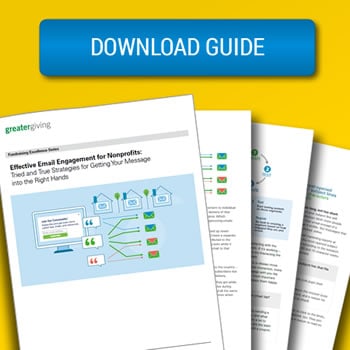
This post is the fifth in a series designed to teach the fundamentals of email marketing for nonprofits. These posts are based on the Effective Email Engagement for Nonprofits: The definitive guide to better nonprofit email marketing. Each post focuses on an element of conducting an email marketing campaign, from crafting the email to measuring recipient responses and adjusting your email approach accordingly.
What’s a hook?
A “hook” is a term for the short opening sentence that gets your email reader curious about what comes next. The “hook” portion is one sentence (maybe two) that quickly introduces the problem at the heart of your ask—while also sharing the core of your nonprofit’s mission. A great hook should provoke an emotional response from the reader.
First… Sit down with your staff and colleagues and brainstorm some of the emotional truths behind your mission. Perhaps you’re a food bank—so hunger and food insecurity sits at the core of what you do, and those you serve. A great hook will evoke and elicit those feelings.
For example, “One in six people in the United States face hunger—people you know and see every day could be struggling to put food on the table.”

Good hooks present a problem and personalize it in a quick, concise, or shocking way. Here are a few ways you can find and develop your own email hooks:
- Open with a question or hypothetical situation. Perhaps your nonprofit provides transportation aid to low-income workers. You could start with this hook: “How could you make a living without a way to get to work?” Likely it’s a situation that likely many of your supporters haven’t experienced, but it’s a startling one to imagine.
A question or hypothetical situation places the reader in the center of the conflict—and conflict is the key component to getting readers invested in fixing a problem. This sort of hook is a great opportunity to add flesh and depth to the problem your nonprofit seeks to address.
Use the rest of your email to provide some more critical, evocative detail about what it would be like in that hypothetical situation—and the path your nonprofit proposes to solving it.
- Open with a personal or specific story. Stories are an emotional currency—we’re drawn to stories as a way to make sense of a difficult, complicated world. Finding the story inside a problem, such as a specific individual grappling with the issue your nonprofit works to address, allows the reader to empathize and emotionally connect. Associating a problem with a face and a name humanizes it. Now there is a real person we can imagine as we read on and consider donating.
Personal experiences can be powerful and engaging—and provide a great opportunity for photos and pictures to highlight the story. Follow up your hook with more emotional details about that person and their journey to make your story pop off the page.
- Open with a powerful statistic or fact. Simple stated facts can go a long way in communicating your message and mission, and carry the added bonus of being peer-reviewed! If you cite a powerful statistic to support your message, be prepared to back it up with citations for those curious minds.
And remember to always tie back into your nonprofit’s work. How is your nonprofit’s work going to address the problem presented by the statistic? Provide a few concise details here and there about specific steps and action items your nonprofit will take to solve it. (More stats are great to include, too, if you have them about your past work!)
